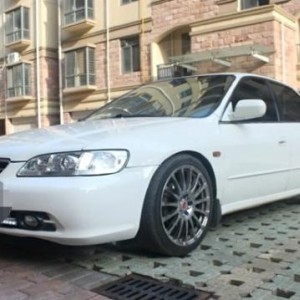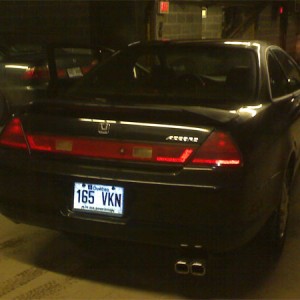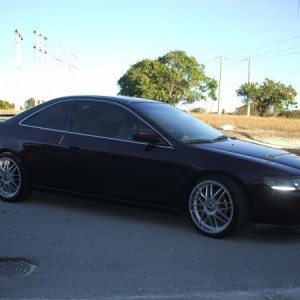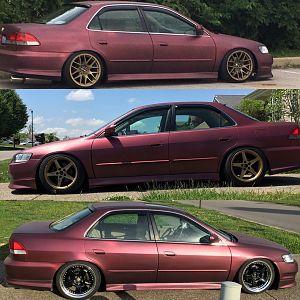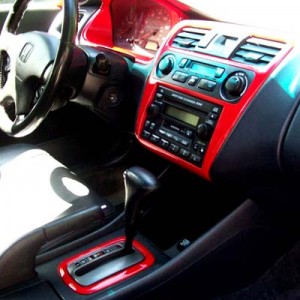SupraGuy
Well-Known Member
Air in the hydraulic line.
The fluid in the line cannot be compressed, therefore pressure at the one end (master cylinder) directly becomes pressure at the other end (slave cylinder)
Air is easy to compress. if there's a bubble in the fluid line, then pressure at the clutch pedal will just compress the air, and not disengage the clutch. You'll get a result with the clutch pedal down ranging from acting like you did not press down the clutch at all, to you not pressing the clutch pedal down far enough, to you lifting the clutch pedal over time. This can cause very hard shifting, needing to do fairly precise RPM matching for shifting. It also puts a lot of wear on the synchromesh gears, so it's best if this is rectified.
There are plenty of tutorials on how to bleed clutch (and brake) systems on-line, however a quick rundown is this: (Some things I'm less certain of, as I have an auto.)
You will need a friend to help, some brake fluid (typically DOT3, get whatever is correct for yoru car), a 10mm (typical for most Japanese cars) wrench, some clear tubing (3-4mm diameter) and a container to drain fluid into.
1. Make sure that the reservoir is completely topped up to start. Some cars have their own for the clutch, some share the brake fluid reservoir.
2. One person under the car, locate the bleeding fitting on the clutch slave cylinder. Attach the clear hose, and put the other end in the container for waste fluid.
3. Have the other person under the car depress the clutch pedal all the way down and hold it.
4. Slowly turn the bleeding fitting counter clockwise until fluid starts to flow through the tube. Watch for bubbles, and watch the fluid color. Don't allow the fluid to flow too fast.
5. Tighten the bleeder fitting, and have the person in car raise the clutch pedal. Check the fluid level in the reservoir.
6. Go back to step 3 and repeat until the fluid flowing through the tube has no bubbles and is a nice fresh clear colour.
7. Make sure that the bleeder fitting is tight, and remove the tube and waste container.
Voila. You've bled your clutch system.
There are "One man" bleeder kits available that have a check valve on the tube allowing you to just open the bleeder fitting and close it again when you are done. They're not QUITE as good as this method, because there can be some reverse flow from the tube back into the line when you lift the clutch, and you end up wasting a little bit more fluid, but will still do a very good job.
The fluid in the line cannot be compressed, therefore pressure at the one end (master cylinder) directly becomes pressure at the other end (slave cylinder)
Air is easy to compress. if there's a bubble in the fluid line, then pressure at the clutch pedal will just compress the air, and not disengage the clutch. You'll get a result with the clutch pedal down ranging from acting like you did not press down the clutch at all, to you not pressing the clutch pedal down far enough, to you lifting the clutch pedal over time. This can cause very hard shifting, needing to do fairly precise RPM matching for shifting. It also puts a lot of wear on the synchromesh gears, so it's best if this is rectified.
There are plenty of tutorials on how to bleed clutch (and brake) systems on-line, however a quick rundown is this: (Some things I'm less certain of, as I have an auto.)
You will need a friend to help, some brake fluid (typically DOT3, get whatever is correct for yoru car), a 10mm (typical for most Japanese cars) wrench, some clear tubing (3-4mm diameter) and a container to drain fluid into.
1. Make sure that the reservoir is completely topped up to start. Some cars have their own for the clutch, some share the brake fluid reservoir.
2. One person under the car, locate the bleeding fitting on the clutch slave cylinder. Attach the clear hose, and put the other end in the container for waste fluid.
3. Have the other person under the car depress the clutch pedal all the way down and hold it.
4. Slowly turn the bleeding fitting counter clockwise until fluid starts to flow through the tube. Watch for bubbles, and watch the fluid color. Don't allow the fluid to flow too fast.
5. Tighten the bleeder fitting, and have the person in car raise the clutch pedal. Check the fluid level in the reservoir.
6. Go back to step 3 and repeat until the fluid flowing through the tube has no bubbles and is a nice fresh clear colour.
7. Make sure that the bleeder fitting is tight, and remove the tube and waste container.
Voila. You've bled your clutch system.
There are "One man" bleeder kits available that have a check valve on the tube allowing you to just open the bleeder fitting and close it again when you are done. They're not QUITE as good as this method, because there can be some reverse flow from the tube back into the line when you lift the clutch, and you end up wasting a little bit more fluid, but will still do a very good job.




